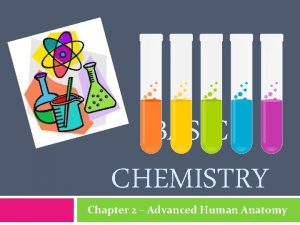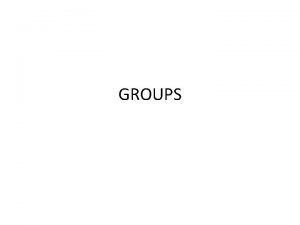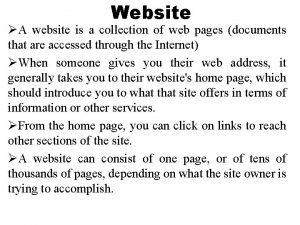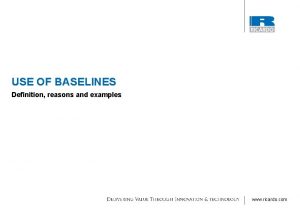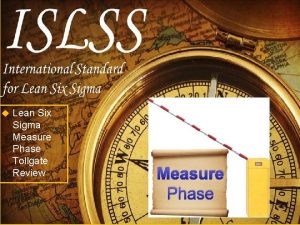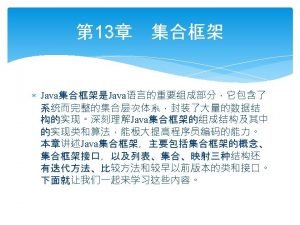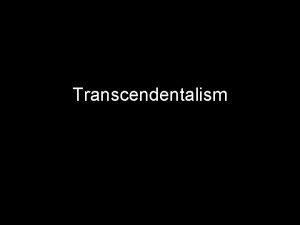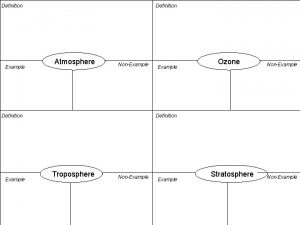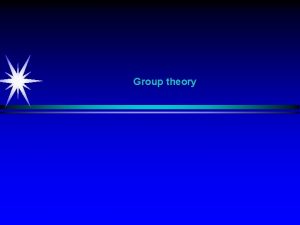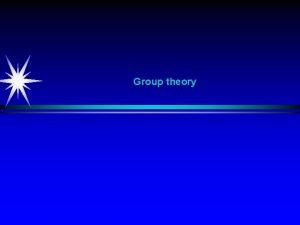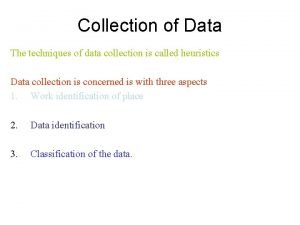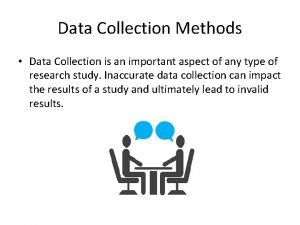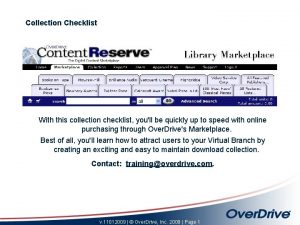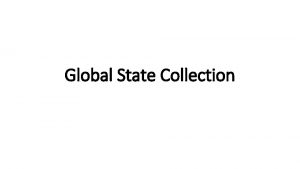Group Definition A group is a collection of






















- Slides: 22

Group Definition ØA group is a collection of two or more people who work with one another regularly to achieve common goals. Ø Groups: l Help organizations accomplish important tasks. l Help to maintain a high-quality workforce by satisfying members’ needs.

What is the nature of groups in organizations? Ø Effective groups achieve high levels of: l Task performance. l Members attain performance goals regarding quantity, quality, and timeliness of work results. l Members satisfaction. l Members believe that their participation an experiences are positive and meet important personal needs. l Team viability. l Members are sufficiently satisfied to continue working together on an ongoing basis.

Benefits of Groups l Good for people l Improve productivity l Sometimes make better decisions l Increase commitment to decisions l Have control over members l Offset the negative effects of large organizational size

Groups and Task Performance l Create the opportunity for synergy. l In the absence of experts make better decisions l More willing to make risky decisions l Problem: Free riding, breakdown in dynamics

Types of Groups l Formal: officially designated for specific organizational purpose. l Informal: form spontaneously, l based on personal relationships and special interests, l can be found within formal groups l

Stages of Group Development l Forming: Everyone very polite, low productivity Primary concern entry into group. l What does the group offer me? l What will I be asked to do? l What is acceptable behavior? l

Stages of Group Development (Cont. ) l Storming: High emotionality and tension, low productivity. Expectations clarified and elaborated l Begin to focus on performance l Understanding increases l Cliques may form l

Stages of Group Development (Cont. ) l Norming: Rules and expectations set, higher productivity. Group comes together l Differences recede l Focus on maintaining group l Standards are clear l

Stages of Group Development (Cont. ) l Performing: Focus on productivity, highest productivity Total integration l Mature state, organized and well functioning l l Adjourning or Reforming Task completed group breaks up l Membership changes start over l

Decision Making in Groups l Lack of Response (Do nothing) l By Authority Rule (Chair decides) l Decision by Minority l Decision my Majority (Voting) l Decision by Consensus l Decision by Unanimity

Advantages of Group Decisions l Better information l More Alternatives Generated l Understanding and Acceptance better after decision. l Commitment to decision stronger

Disadvantages Of Group Decisions l Social Pressure to Conform--Group Think l Minority Domination l Time Demands

Team Work l Characteristics of High Performing Teams Strong sense of core values l Turn general sense of values into specific objectives l Have the right mix of skills l Possess Creativity l

How to Create a High Performance Team l Communicate High Performance Standards l Set the tone in first meeting--primacy l Make sure members have the right skills l Establish clear rules for team behavior l Find ways to create early success l Make sure members spend time together l Give positive feedback and reward high performance

Team Process: Task Activities l Initiating: offering ideas, suggestions solutions l Seeking Information: Clarifying suggestions, seeking functional accuracy, asking others. l Giving Information: Providing relevant information.

Team Process: Task Activities (cont) l Clarifying: clarifying relations among suggestions, coordinate members activities. l Summarizing: assessing group function, raising questions about logic.

Group Maintenance Activities l l l Encouraging: praising, accepting, agreeing, warmth. Harmonizing: mediating disagreements, seeking opportunities for compromise. Setting Standards: expressing standards for behavior and achievement. Following: going along, agreeing Gate keeping: encouraging participation, keeping some members from dominating.

Disruptive Behavior l Overly Aggressive l Withdrawing l Using group for self-confession l Talking about irrelevant matters l Trying to compete for attention

Group Cohesiveness l High Performing groups need cohesiveness l Cohesiveness is high when: Groups are homogeneous l Groups are small l Have shared goals l Members are Interdependent l Increases when groups are physically isolated l

Group Norms l Rules and Expectations that are enforced l Can be positive or negative, support goals or undermine them.

Relationship of Cohesion and Norms

Creating Cohesion l l l l Establish urgency and importance of task Goals: Get Agreement Membership: Increase Homogeneity Interactions: Increase within group Size: Small Groups Competition: Focus on other groups Rewards: Reward group results Location: Isolate group
 Landsat collection 1 vs collection 2
Landsat collection 1 vs collection 2 Documentary collection
Documentary collection Psychology chapter 13
Psychology chapter 13 Y = a(b)^x
Y = a(b)^x Anova within group and between group
Anova within group and between group Types of social groups in sociology
Types of social groups in sociology Jrcptb
Jrcptb How to compare thermal stability of group 2 nitrates
How to compare thermal stability of group 2 nitrates Amino group and carboxyl group
Amino group and carboxyl group Amino group and carboxyl group
Amino group and carboxyl group In group out group
In group out group Group yourselves
Group yourselves William graham sumner in group out group
William graham sumner in group out group Joining together group theory and group skills
Joining together group theory and group skills What is harvest
What is harvest Website is a collection of html *
Website is a collection of html * Waste collection lindsay
Waste collection lindsay Amager resource center
Amager resource center Windchill managed collection
Windchill managed collection Collection unit 4
Collection unit 4 Findings of qualitative research
Findings of qualitative research Data collection planning in the measure phase starts with
Data collection planning in the measure phase starts with Tonbridge and malling rubbish collection
Tonbridge and malling rubbish collection









